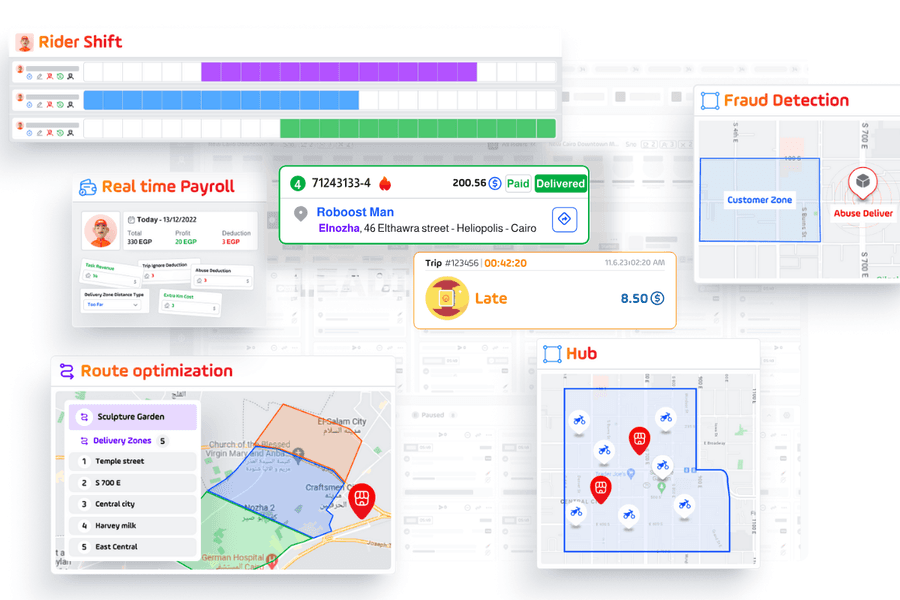Dec 31, 2024
The home delivery industry has experienced transformative changes throughout 2024, reshaping how businesses operate and meet customer expectations. These shifts, driven by evolving client demands, advanced technologies, and the growing importance of data-driven insights, have set the stage for more efficient and scalable delivery best practices.
1. The shift from dedicated teams to hubs
In a significant departure from the traditional model of assigning dedicated riders to individual stores, businesses have adopted the usage of delivery hubs. These centralized hubs deploy teams of riders who serve multiple stores simultaneously, ensuring better resource allocation and reducing idle time. This approach enhances delivery efficiency, particularly in high-demand urban areas, and lowers operational costs.
2. Dynamic Trip Capacity
In response to market needs, single-order trips have been replaced by capacity optimization strategies. The shift to dynamic trip capacity allows businesses to automatically switch between one and two orders per trip, depending on rush periods, averaging at 1.5 orders per trip. This adaptability has resulted improved fleet utilization and reducing delivery delays.
3. Combined Delivery Zone and GPS Routing
Sole reliance on GPS for delivery routing has led to inefficiencies in order grouping, often causing delivery delays. Businesses have shifted to a combined approach that factors in both GPS data and predefined address delivery zones. This hybrid routing system minimizes grouping errors, enabling more accurate order clubbing and enhancing the overall customer experience.
4. Performance-Based Rider Payroll
Static and shallow payment schemes for riders have become outdated. In 2024, performance-based payroll systems emerged as the new standard. Evaluating multiple factors such as:
trip performance
rider ratings
complaint records
fraud actions
actual on-duty time.
By aligning pay with performance, businesses have successfully inspired higher rider efficiency and accountability.














